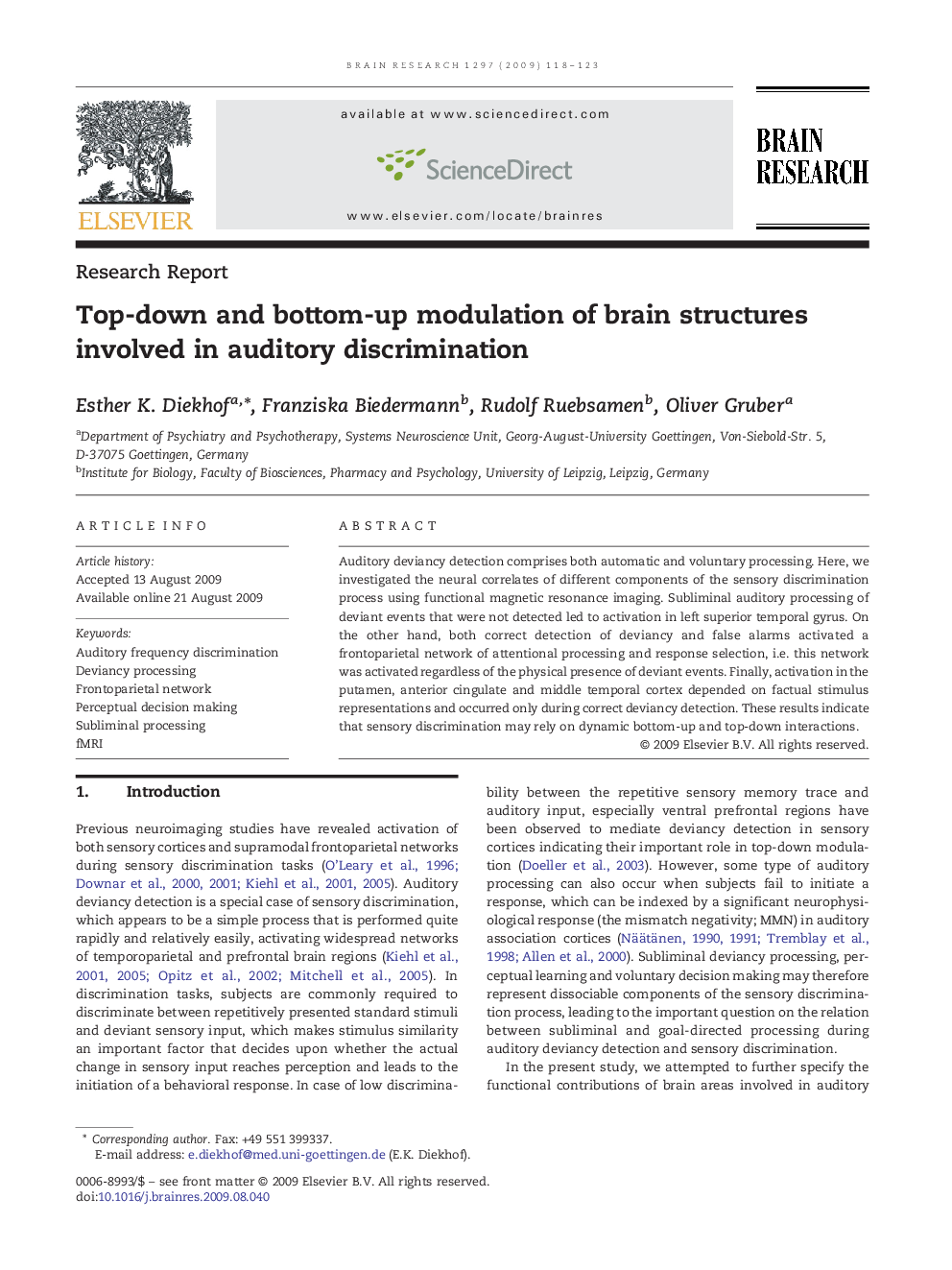| Article ID | Journal | Published Year | Pages | File Type |
|---|---|---|---|---|
| 4327807 | Brain Research | 2009 | 6 Pages |
Auditory deviancy detection comprises both automatic and voluntary processing. Here, we investigated the neural correlates of different components of the sensory discrimination process using functional magnetic resonance imaging. Subliminal auditory processing of deviant events that were not detected led to activation in left superior temporal gyrus. On the other hand, both correct detection of deviancy and false alarms activated a frontoparietal network of attentional processing and response selection, i.e. this network was activated regardless of the physical presence of deviant events. Finally, activation in the putamen, anterior cingulate and middle temporal cortex depended on factual stimulus representations and occurred only during correct deviancy detection. These results indicate that sensory discrimination may rely on dynamic bottom-up and top-down interactions.
